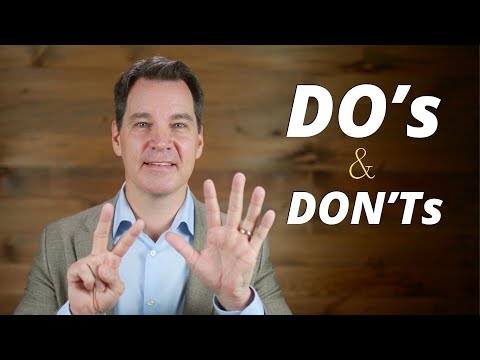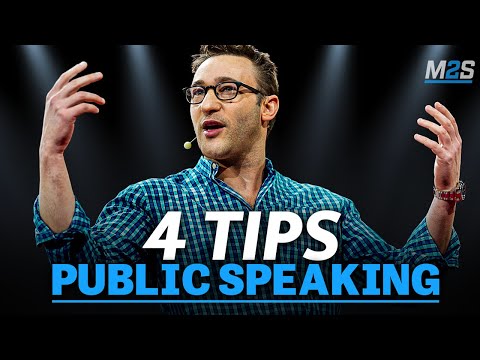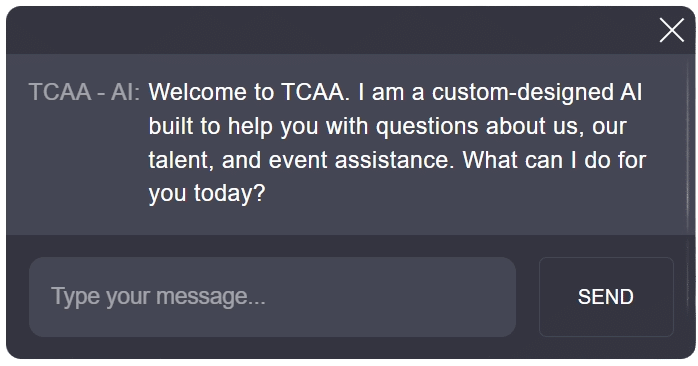Mastering the art of public speaking is an invaluable skill, whether you’re an entrepreneur, a teacher, or a motivational speaker. In today’s connected world, communication shapes personal and professional success. Knowing how to effectively convey your message is crucial. This article dives deep into the nuances of public speaking, providing you with an extensive arsenal of strategies, methods, and public speaking tips to ensure your voice resonates with power.

The Foundation: Learning Public Speaking
Before diving into advanced tips, understanding the basics is essential. Learning public speaking involves being familiar with foundational principles that effective speakers, from Barack Obama to Brené Brown, have used.
Understand Your Audience
Knowing your audience lets you tailor your message to their interests, level of understanding, and needs. For instance, Steve Jobs consistently refined his presentations by envisioning his audience’s perspective. His complex technical announcements were accessible and engaging.
Structuring Your Speech
A well-structured speech has a clear beginning, middle, and end. Using the ‘Tell them what you’re going to tell them, tell them, then tell them what you told them’ method has proven successful for speakers like Tony Robbins. This structure helps in creating a cohesive and memorable presentation.
Practice
Renowned speakers often practice extensively. For instance, Oprah Winfrey rehearses her speeches multiple times to ensure flawless delivery. Practice public speaking is a key ingredient for perfection.

Top Techniques on How to Public Speak Effectively
Elevate from basic speaking principles to effective public oration by embracing certain techniques that can make a significant difference.
Harnessing the Power of Storytelling
Stories captivate and engage audiences. Simon Sinek, author of “Start with Why”, often begins his talks with personal anecdotes to connect emotionally with his audience. This technique makes your message relatable and memorable.
Mastering Nonverbal Communication
Body language, gestures, and facial expressions are as crucial as your words. TED speaker Amy Cuddy emphasizes ‘power poses’ to instill confidence and command attention. These nonverbal cues can significantly enhance your message delivery.
Vocal Variety and Tonality
Varying pitch, pace, and volume can keep your audience engaged. Sir Ken Robinson’s TED talk stands out due to his use of vocal variety, making his points more compelling. This technique helps in maintaining interest and emphasis.

| Tip | Description | Benefits |
| Know Your Audience | Research and understand the demographics, interests, and expectations of your audience. | Tailored message increases engagement and relevance. |
| Practice | Rehearse your speech multiple times, including in front of a mirror or with a small audience. | Builds confidence and reduces anxiety. |
| Structure Your Speech | Organize your speech with a clear introduction, body, and conclusion. Use bullet points or an outline. | Helps in delivering a coherent and memorable message. |
| Use Visual Aids | Incorporate slides, props, or videos to illustrate your points. | Makes complex information easier to understand and maintain audience interest. |
| Engage with the Audience | Ask questions, invite participation, and make eye contact. | Encourages interaction and makes the audience feel involved. |
| Manage Your Time | Be mindful of the allotted time for your speech and practice to ensure you do not exceed it. | Keeps the audience’s attention and respects their time. |
| Use Non-Verbal Communication | Pay attention to your body language, facial expressions, and gestures. | Enhances message delivery and credibility. |
| Handle Q&A Professionally | Prepare for possible questions and practice how to address them confidently and diplomatically. | Demonstrates your expertise and readiness. |
| Control Nervousness | Utilize techniques such as deep breathing, visualization, and positive affirmations to calm nerves. | Increases overall performance and reduces speech anxiety. |
| Record and Review | Record your practice sessions and review them to identify areas of improvement. | Provides insights into your performance, leading to continuous improvement. |
| Learn from Feedback | Seek constructive feedback from peers, mentors, or your audience. | Offers valuable perspectives and helps you refine your skills. |
| Stay Authentic | Be yourself and let your personality shine through. Avoid mimicking others. | Builds trust and connection with the audience. |
| End with Impact | Conclude your speech with a powerful statement, call to action, or a memorable story. | Leaves a lasting impression and reinforces your message. |
Advanced Public Speaking Tips for Mastery
Once you’ve mastered the basics and techniques, it’s time to explore advanced strategies. These tips for public speaking can transform you from a good speaker to an exceptional one.
Engage Through Rhetorical Questions
Asking questions can make your audience think and stay engaged. Great speakers like Michelle Obama use rhetorical questions to emphasize points and invite introspection, making the audience feel involved in the conversation.
The Use of Technology
Leveraging technology can enhance your presentations. For example, Al Gore’s use of visual aids in “An Inconvenient Truth” provided a powerful complement to his compelling narrative. Virtual presentation tools can be pivotal.
Handling Q&A Sessions
Managing Q&A sessions effectively can leave a lasting impression. Experts like Elon Musk have honed the skill of addressing even the most challenging questions with poise and confidence. Preparing for potential queries is key.

Crafting Your Unique Speaking Style: How to Public Speaking Like a Pro
Developing your unique style is vital for standing out. Here’s how you can make your speaking style truly your own.
Authenticity
Audiences cherish authenticity. Brené Brown’s vulnerability in her talks exemplifies how being true to yourself can foster deeper connections with your audience. Authenticity builds trust and rapport.
Adaptability
Be ready to adapt on the fly. The ability to pivot based on audience reactions or technical glitches is critical. Comedians like Kevin Hart showcase adaptability, seamlessly adjusting their performances depending on audience engagement. This flexibility can make or break your presentation.
Continuous Feedback and Improvement
Constantly seek feedback and strive for improvement. Public speaking platforms like Toastmasters provide opportunities for continuous self-assessment and refinement. This commitment to improvement is what separates great speakers from the rest.

Real-World Examples: Learning from the Best in Public Speaking
Real-world examples provide tangible insights into successful public speaking.
Barack Obama’s Eloquent Persuasion
Obama’s speeches often feature a well-crafted blend of inspiration, clear messaging, and compelling narratives. His 2008 victory speech is a benchmark for mixing personal anecdotes with broader visions. His eloquence is an example worth emulating.
Sheryl Sandberg’s Interactive Approach
Sheryl Sandberg’s speeches, such as her TED talk “Why we have too few women leaders,” skillfully combine data-driven arguments with personal stories, maintaining audience engagement through relatability and clarity. Her interactive style keeps the audience fully engaged.
The Minimalism of Steve Jobs
Steve Jobs’ presentations are a lesson in minimalism and clarity. His focus on simple, powerful visuals and a straightforward narrative arc during product launches set a high standard in corporate presentations.
Takeaway: Elevate Your Public Speaking to New Heights
Achieving mastery in public speaking goes beyond knowing what to say. It involves understanding your audience deeply, practicing extensively, and continuously refining your techniques. By embodying lessons from notable figures and incorporating advanced strategies, you can elevate your public speaking engagements to new heights, captivating and inspiring your audience with every word. Remember, every speech is an opportunity to connect, influence, and leave a lasting impression. Embrace these public speaking tips, and let your voice resonate powerfully across any platform.
Ready to start your journey? Discover more tips and resources on How To public speaking and learning public speaking today.
Public Speaking Tips: Master The Art
Fun Trivia and Interesting Facts
Public speaking can be a daunting task. However, a sprinkle of trivia can make your speech memorable and engaging! Did you know Paul Orfaela, the founder of Kinko’s, struggled with dyslexia? Despite this, he became a successful businessman and an inspiring speaker. His story is a powerful reminder that overcoming personal challenges can make your public speaking more relatable and inspiring.
Interestingly, drawing comparisons from various fields can also spice up your talks. For example, Pat Riley’s coaching career is an exceptional story of leadership and perseverance. His ability to motivate his team under pressure can be translated into tips for keeping your audience engaged even when the topic gets a bit dry.
Moreover, integrating examples from pop culture can be a hit! During one of their tours, Jodeci’s electrifying performances were not only entertaining but also a masterclass in audience interaction. Just like a lively concert, engaging your audience with enthusiasm can make all the difference in your delivery.
Finally, don’t shy away from unusual sources of inspiration. For example, the title Kyonyuu Suki nanoni Bl Kai ni Tensei shimashita might not be on everyone’s bookshelf, but its unique narrative can remind us of the power of storytelling. If you weave stories into your speech subtly, you captivate your audience’s imagination and keep them hooked.
Incorporating fun trivia and engaging facts not only makes your speech more enjoyable but also helps you connect with your audience on a deeper level. So, the next time you prepare for a speech, remember these public speaking tips to captivate and inspire.




















